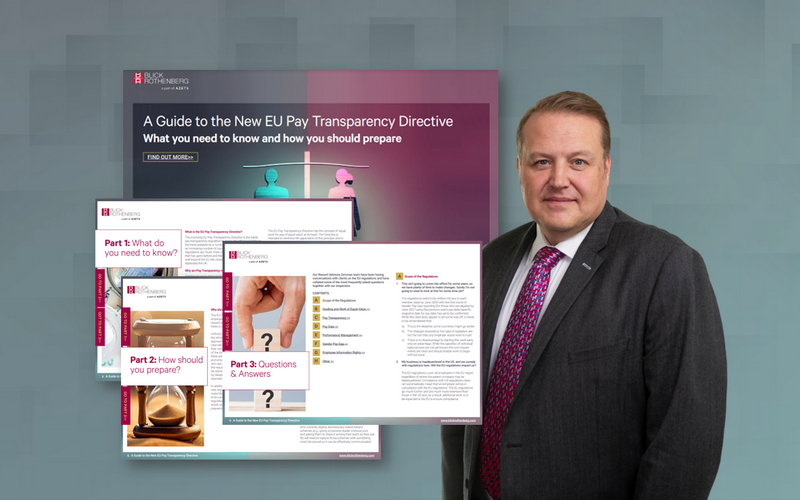EU Pay Transparency Regulations
Stuart Hyland looks at a significant change for the EU and the UK
What are the EU Pay Transparency Regulations?
The EU is following many other parts of the world (including US, Canada, Japan and Australia) in introducing a set of Pay Transparency Regulations. The EU is concerned that the Gender Pay Gap across the region currently averages 13% and is not falling fast enough. As a result, the regulations are intended to ensure that employers adhere to the principle of equal work for equal pay to help deliver equality.
EU member states have until June 2026, at the very latest, to write the requirements of the EU Directive into their national legislation. The regulations will apply to all employers in the EU and it is expected that every single employer in the region will need to take action to ensure compliance.
The regulations fall into two broad categories relating to gender pay gap (GPG) reporting and to broader transparency and communications activity. GPG reporting is nothing new, but all EU countries will now have to put a process in place with an additional requirement to take action (in partnership with employee representatives/works councils) where a GPG of over 5% exists. The broader transparency requirements include, amongst other things, the need to publish salaries in job adverts, publish information on how pay is set, managed and progressed, provide salary comparisons for work of equal value, and they remove an employer’s ability to ask a candidate about their current salary at interview.
Why are they important?
Employers need to begin preparing and planning for changes now as the EU regulations are more comprehensive than any that have been deployed before in other parts of the world. In addition to a number of specific actions, they will also require employers to:
- introduce a robust and non-discriminatory job evaluation scheme to identify work of equal value if one is not already being used
- restructure reward programmes that have a significant discretionary element to them e.g. bonus plans where a manager is asked to distribute a pot of money amongst a team as they see fit
- ensure their performance management approach and use of market data is robust, consistent and defensible if they are to be used to justify any pay differences between work of equal value
What about the UK?
The UK is not formally covered by the regulations as it is no longer part of the EU, however, this does not mean the UK can ignore them. European employers are stating their clear intention to apply the regulations across their entire European operations (including the UK) and as a result we should expect UK market practices to change significantly over the next two years.
It is strongly recommended that UK employers also ensure they are aware of the EU regulations and begin to adapt their approaches because failing to do so is likely to impact on the ability to attract and retain talent as the market evolves.
Would you like to know more?
If you have any questions about the above and how it applies to your business, please get in touch with your usual Blick Rothenberg contact or Stuart Hyland using the details on this page.
What is the EU Pay Transparency Directive?
The incoming EU Pay Transparency Directive is the latest pay transparency regulation to come into effect and follows the trend adopted by a number of US states, Australia and an increasing number of countries in Asia.
The EU regulations are much more comprehensive than anything that has gone before and their impact is expected to be felt well beyond the EU into closely related employment markets, especially the UK.
The regulations represent a significant shift in employment practices that will impact every employer with people in the EU.
Download our guide to the New EU Pay Transparency Directive.

The guide covers
What do you need to know?
What is the EU Pay Transparency Directive?
Why are Pay Transparency regulations needed?
When will the new Directive come into effect?
What are the Requirements of the EU Regulations?
How must employers respond to the new Directive?
How will this affect UK employers?
How should you prepare?
Why should you begin planning now?
What six questions should you ask yourself?
How can you plan for change?
Questions & answers
Scope of the Regulations
Grading and Work of Equal Value
Pay Transparency
Pay Data
Performance Management
Gender Pay Gap
Employee Information Rights
Download the guide
Contact Stuart

You may also be interested in

Self’s assessment: Budget changes to the HICBC

Non-domicile changes – Trust protection











